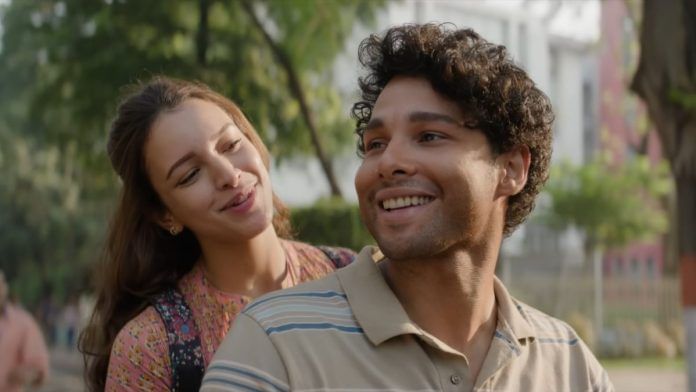Much of the mainstream reviewing of Dhadak 2 reads Dalit love through dominant-caste Bollywood analogies — especially the “Dalit Shah Rukh Khan” trope. But such comparisons erase the film’s political grammar.
Critics’ use of the phrase “Dalit Shah Rukh Khan” — even when framed ironically — reinscribes dominant-caste benchmarks onto Dalit lives. This is not to deny SRK’s charisma or his role in shaping Hindi cinema’s romantic imagination. But that very imagination is built within Savarna geographies and elite scripts that systematically exclude the marginalised.
SRK’s heroism has never confronted systemic caste violence. To compare a Dalit protagonist to him — even aspirationally — is a form of cultural assimilation. It suggests Dalit tenderness or masculinity must be validated through dominant-caste fantasies.
Too often, critics fall into intellectual laziness, translating marginalised lives into the idioms they know — SRK, Bachchan, Sachin — rather than allowing these characters to stand on their own terms.
A different grammar of looking
Dhadak 2 has sparked debate about performance, craft, direction, and politics. Yet much of the conversation reflexively reaches for Savarna reference points to “explain” Dalit lives. The result is an interpretive grid that flatters what we already know instead of noticing what is new.
An Ambedkarite approach resists that grid. It reads the film in the language of the lives it depicts — without translating them back into elite cinematic idioms.
Neelesh is not SRK
Neelesh, the protagonist of Dhadak 2 played by Siddhant Chaturvedi, is not soft or apolitical. He is a young man navigating a caste society that punishes tenderness and silences. His dreams are modest: a dog, a dhol group, a polytechnic course. He is not romanticised. He is surviving, struggling, explaining his condition.
When caste intrudes — with humiliation or violence — he responds not with cinematic flourish but with pain and political awakening. He is not a failed version of SRK; he represents a new cinematic masculinity shaped by historical oppression and injustice.
There is no singing in the Alps. No “Babuji” waving him off. Instead, his mother hesitates to send him to his girlfriend’s house — a quiet reminder of his place in a caste society. Dalit love stories are not failed Savarna fantasies; they are acts of defiance in hostile worlds.
Also read: Dalits are doing the work doctors reject—‘No postmortem without a safai karmachari’
Vidhi: A feminist beyond the stereotype
A common critical move is to treat Vidhi (Triptii Dimri) as someone who “learns” about caste because she loves Neelesh. That misreads her. Vidhi, in fact, is a feminist in the truest intersectional sense.
She challenges caste in classrooms, confronts professors, signs petitions, and never recoils from Neelesh’s identity. She is the first to say his surname — Ahirwar — aloud. She does not perform caste-blindness; she practices caste-conscious solidarity.
Vidhi doesn’t “become” anti-caste — she already is. She isn’t merely learning from Neelesh; she is leading, supporting, protecting. As bell hooks reminds us, “Love is an act of will—both an intention and an action.” Vidhi’s actions show feminist will, not just romantic interest.
She should be re-centered not as a Savarna awakening symbol, but as a political subject in her own right.
A caste-political text with love
Dhadak 2 is too often slotted as a “Dalit romance”, as if caste were a decorative subplot. In truth, the film foregrounds Ambedkarism, reservation anxieties, hiding surnames, migration, honour violence, and the impossibility of being “casteless”.
Love here is not escape; it is instruction. It shows what tenderness must endure — and what it cannot survive.
The film’s lineage matters: as a north Indian retelling of the 2018 Tamil film Pariyerum Perumal, it locates Ambedkarite cinematic grammar in a new geography without diluting its charge.
Who gets to define ‘universal’?
Who decides what is “universal”, what counts as “romance”, or whose pain is “relatable”? In a mediascape dominated by upper-caste voices, even well-meaning reviews can translate Dalit life into elite analogies. That habit is not neutral — it is a form of erasure.
Criticism should do the opposite. Leave the edges on, refuse borrowed metaphors, and protect specificity — language, neighbourhood, aspiration, shame, pride — so that representation is not merely present, but lucid.
Also read: There is no single Dalit identity. Regional histories show how it is shaped
A call to recentre Dalit love on Dalit terms
We do not need a “Dalit SRK.” We need Dalit heroes and heroines whose love stories unfold in their own languages, in their geographies, free from dominant-caste templates.
Imagine a film where a Dalit boy and girl fall in love in a basti, speak their dialect, negotiate with their parents and elders — without ever referencing elite cinematic parallels. Why compare apples to oranges when you haven’t even bought the apple?
Let Dhadak 2 breathe
The most generous thing criticism can do for Dhadak 2 is to stop assimilating it into the ready-made. Read its silences, its hesitations, its harsh corners. Notice how the camera lingers where Bollywood cuts away. Hear how speech stalls around surnames. Watch the choreography of distance: who sits, who stands, who enters a doorway first.
If we do that, Dhadak 2 no longer appears as an “issue film” struggling to be a romance. It becomes what it is: a film about the labour of love in a society that makes dignity costly.
Let Neelesh be Neelesh. Let Vidhi be Vidhi. Let Dalit love speak in its own grammar — and on its own terms.
Madhusudan Nag is a senior researcher at Maulana Azad National Institute of Technology, Bhopal. He holds a PhD in Economics from the Centre for Development Studies (CDS), Kerala. He tweets @MSnag_writes. Views are personal.
(Edited by Aamaan Alam Khan)







This is a very insightful piece. I like how it goes beyond the ‘Dalit SRK’ analogy and situates Dhadak 2 in an Ambedkarite grammar of love and resistance.